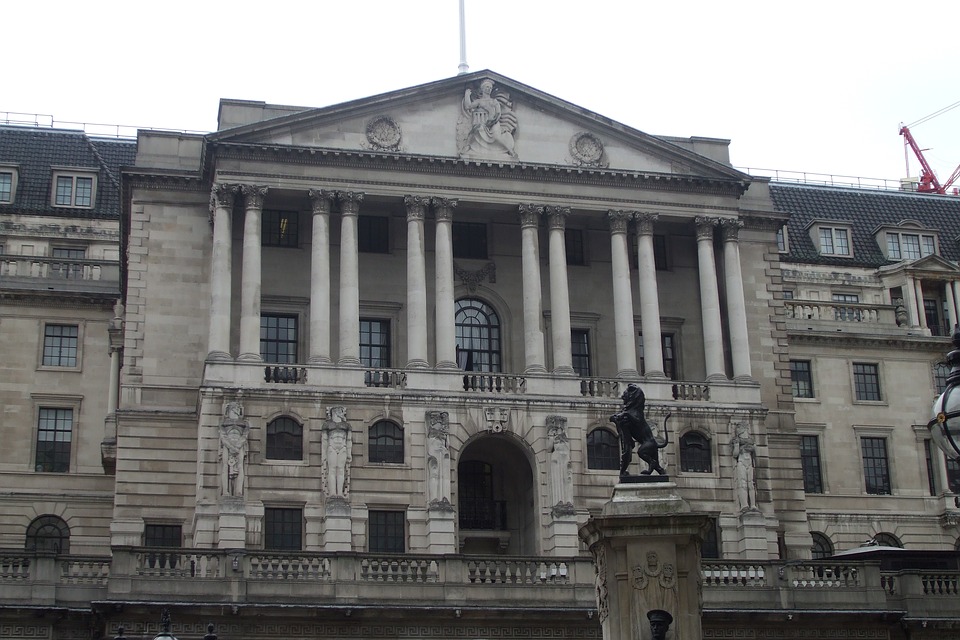Winning a government grant can be a real boon for SMEs looking for funding, technology or expertise. In this post, we will discuss everything an SME needs to know about such grants.
Running a successful business is all about pre-empting, overcoming – and, at times – walking around hurdles. These hurdles come in every shape and size you can think of – from HR and compliance to marketing and branding. But if there’s one common denominator among all the problems businesses face, it has to be the money.
Take funding, for example. SMEs around the world and across the board are known to struggle when it comes to raising money. SMEs in the UK are no exceptions to this. In fact, so difficult is raising money via traditional, mainstream and high-street lenders that SMEs have gradually started thinking beyond banks and towards alternative funding channels.
In such times, the role played by the government becomes more crucial than ever. Government grants are, without a doubt, the face of this role. This is the reason why understanding how these grants work and how your SME can give itself a good shot at winning one are important. In this post, we will try to cover what government grants for SMEs are, how they work and how to find and apply for a grant that is suitable for your business.
What is a Government Grant?
A government grant is essentially an incentive package made available by various government bodies and organisations to individuals as well as businesses. Government grants (barring the finance grants) are usually non-repayable.
Depending upon the nature of the grant body and the grant objective, these grants can come in a variety of sizes and formats. As far as small businesses are concerned, such grants range from £1,000 to £500,000. Some of the bigger and more prized grants can go even higher.
Why Are Grants Given to SMEs?
Government grants have been there for a long, long time. The names and forms they have taken may have changed over time – from business subsidies to business support – but the objectives haven’t. If you were to analyse government grants across business sectors and districts, two things become very clear:
- Most government grants have a singular objective – to keep the economy growing. This objective takes many avatars such as employment generation, sectoral development, regional development and so on. Grants that have these objectives are more or less permanent fixtures.
- Other grants aim to follow, aid and complement ongoing policies of the government. Such grants typically reflect the incumbent government’s views in regard with trade, environment, social welfare, technology etc.
To put things in a more sweeping perspective, we can say that government grants have three clear objectives:
- Boost economy through regional and local development
- Generate employment by supporting businesses
- Create an economic environment that encourages innovation, entrepreneurship and ‘home-grown’ research
As of 2018, nearly 200 government grants are available for SMEs in the UK.
Why SMEs Should Take Government Grants More Seriously
Even though government grants are incredibly appealing, very few SMEs actually realise the potential of such grants. Here are some features of government grants that SMEs can’t afford to overlook:
Government Grants Are Diverse
Very specific grants are available across all business sectors. This allows SMEs to compete more fairly for similar grants.
Grants Are More Than Just Money
As we will discuss in the next part of this post, government grants offer much more than just money.
Winning a Grant Validates Your Business Idea
A large number of SMEs are stuck in the validation loop that stops them from expanding or trading more confidently. Inadequate funding makes matters even worse. A grant can be a good way to turn the corner in such times and receive external recognition and validation.
Government Grants: Shortcomings & Drawbacks
While the features associated with government grants are certainly attractive, there exist shortcomings and drawbacks you should be aware of:
The Competition Is Fierce
The competition for government grants is fierce to say the least. Since young businesses, start-ups and established businesses all tend to spill over into the space that’s reserved for SMEs, the competition can become entirely off-putting.
It Can Take Months Before You See the Money
Applying for a government grant isn’t always the smoothest of processes. It can take many months for the assessment process to conclude, making grants irrelevant for businesses that require urgent funding.
Grants Can Never Replace External Funding
Given their limitations in size and scope, government grants cannot replace external, third-party funding channels – not in the long run, anyway.
Types of Government Grants for UK SMEs
In our guide to start-up funding, we have already discussed the various types of government grants. In the context of SMEs, these types remain more or less the same.
Direct Grants
A direct grant is a project-specific and objective-driven cash reward to businesses that meet the criteria. This is what most businesses think of when they think of a government grant.
Despite being the most popular and sought-after type, these grants come with a host of limitations and riders. As things stand today, direct grants focus more on young SMEs (trading for 5 years or less) in economically disadvantaged regions and districts. Furthermore, the grant amount is usually on the lower side. Given these facts, one would be forgiven to think that direct grants are good for encouraging businesses, but not necessarily supporting them.
- Direct Grants Are Not Free Money!
It’s a common misconception among business owners and operators that winning a direct grant is just like winning a lottery. The fact is direct grants are nothing like free money.
Almost every direct grant scheme requires you to match the grant amount – a pound for a pound.
In other word, a direct grant of £10,000 will need you to raise £10,000 on your own before you see any of the grant money.
We, at Commercial Finance Network, have helped numerous SMEs raise the capital required to win direct grants. You can learn more about our services here and request a free quote here.
- Most Direct Grants Are Project-Based.
Unlike other grant types, direct grants are almost always project-based. The grant objective clearly tells you what you’re expected to spend the money on. Some grant bodies go so far as to monitor the spending.
A good example of an SME direct grant is the Business Energy Efficiency Programme organised by various local councils in the West Midlands. This direct grant offers rewards up to £20,000 for the qualifying businesses that implement energy saving technologies in their operations.
Finance Grants
If you are looking for a well-meaning financing support for your SME, finance grants should always be the focus of your search.
A finance grant combines the features of grants and loans. Also known as ‘soft loans’, such grants are an excellent way of raising a significant sum of money for SMEs. Typically, the loan amount can go from as low as £5,000 to as high as £250,000. Finance grants are usually available around the year. Unlike direct grants, however, finance grants are repayable. The terms of repayment are subsidised through public funding. So, you may either get a loan that’s fully free of interest, or you may get a lenient repayment schedule with generous repayment holiday months/years.
- Soft Loans Are Not Always Project-Based
Unlike direct grants, finance grants (soft loans) aren’t always project-based. The grant objectives can be wide-ranging to allow you more control over the spending.
- The Qualification Criteria Can Be Stringent
Quite a few finance grants require you to prove that your SME is unable to secure funding from other mainstream lenders. This translates into additional documentation and longer processing times.
- The Grant Amounts Are Flexible
The biggest advantage that finance grants offer is their flexibility. You can negotiate the loan terms and amounts with the grant body (much unlike direct grants that leave no room for negotiation).
ART Business Loans make for a good example here. This finance grant offers low-interest loans to businesses that generate employment in the West Midlands. The loan size ranges from £10,000 to £150,000.
The UK Export Finance (UKEF) scheme is also a very fitting example of how government grants are at their efficient best when partnered with private investors and lenders. It aims to promote exports to our major cross-border trade partners by helping SMEs raise funds, win overseas contracts/orders, fulfil these orders and access trade finance.
Tax Relief Schemes
Tax Relief Schemes are indirect grants offered to qualifying SMEs. There are little to no upfront benefits to such schemes. In the long run, however, these tax savings can be very attractive. Here are some common and ongoing tax relief schemes that you can focus on:
Tax Relief Schemes for SMEs
1. Employment Allowance
Most businesses are required to contribute to the National Insurance every year. By securing the Employment Allowance, your business can save up to £3,000 on these contributions.
2. SME Business Rates Relief
All properties owned by businesses are charged business rates by local councils. If your business holds one property (valued at £12,000 or less), you can apply for 100% Small Business Rates Relief. For businesses holding two or more properties, it’s still possible to get proportionately lower relief.
3. Corporation Tax Reliefs
- Capital Allowances let SMEs claim tax reliefs against the purchase of business assets.
- R&D Reliefs are meant to encourage R&D spending.
- Creative Industry Tax Reliefs provide special tax reliefs to ‘creative’ industries such as arts, film, theatre, music and digital media.
- The Patent Box is one of the most exciting tax relief schemes out there. This scheme allows inventors and businesses to claim tax reliefs against profits made by the use or licensing of their patents.
- There are many other Corporation Tax Relief Schemes tailored for the need of SMEs. You can refer to this page to learn more.
Tax Relief Schemes for SME Investors
1. Enterprise Investment Scheme (EIS)
The Enterprise Investment Scheme is perhaps the strongest investment magnet for SMEs. Under this scheme, SME investors can claim tax credits and reliefs of up to £300,000 each year. This scheme applies to total investment of up to £5 million per year.
2. Seed Enterprise Investment Scheme (SEIS)
This scheme is similar to EIS but limited in scope to serving start-ups and young businesses. If your SME has been trading for no more than 2 years, your investors can claim tax credits under the SEIS.
SME Grant Finder: How to Find Government Grants
Searching through available government grants is no longer a dreadful or time-consuming task. Just head over to the Business Finance and Support page and filter through the available options. This page allows you to zero in on government grants based on your location, business type, size and turnover.
5 Steps SMEs Need to Take to Win Grants
1. Applying Early
Applying early gives you an important edge over competitors. To be able to do this, you need to be aware grant announcements.
2. Preparing a Detailed Business Plan
It doesn’t matter what sort of loan, support or grant you are after – you will always need a business plan that paints a clear picture of the present state of your business and your future objectives. A good, in-depth business plan that answers questions even before they are asked enormously improves your chances of winning government grants.
3. Understanding the Grant, the Grant Body and the Grant Objectives
If your grant application is rejected, it’s very much likely that the fault lies neither with your business nor the grant – it lies with the incompatibility of your objectives with those of the grant body. The best way to avoid this is to apply for grants that share objectives with your business.
4. Having Professionals on Board
If you don’t have prior experience in applying for grants, it’s always a good idea to hire grant experts and consultants.
5. Preparing a ‘Winning’ Grant Application
A generic, off-the-bat grant application is never going to win you a grant. Preparing a grant application that lets the grant body know how you share in their objectives is the key.
We Help SMEs Grow!
Government grants offer a host of opportunities for SMEs to raise the much-needed funding. It is, however, never a good idea to rely heavily on government grants. The timelines are unpredictable, the amounts are usually lower than what you need and you will, in most cases, need to raise external funding anyway.
But it’s not all bad news – there are easier way to fund your business.
Commercial Finance Network – a leading whole of market broker – has helped many SMEs across the UK secure fast and low-interest funding. To know more about our industry-leading finance services, you can visit this page.
Check your eligibility for a low-interest business loan and other finance products by requesting a free quote here.







